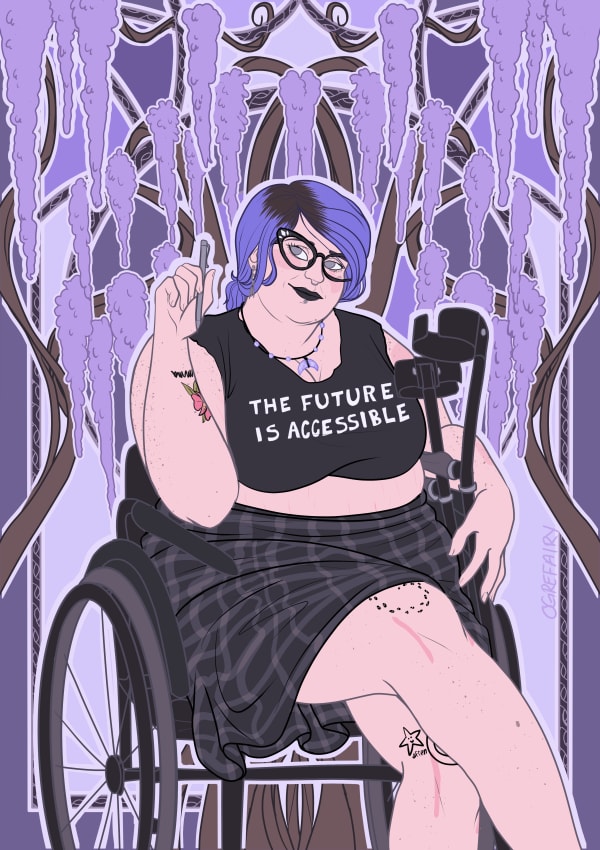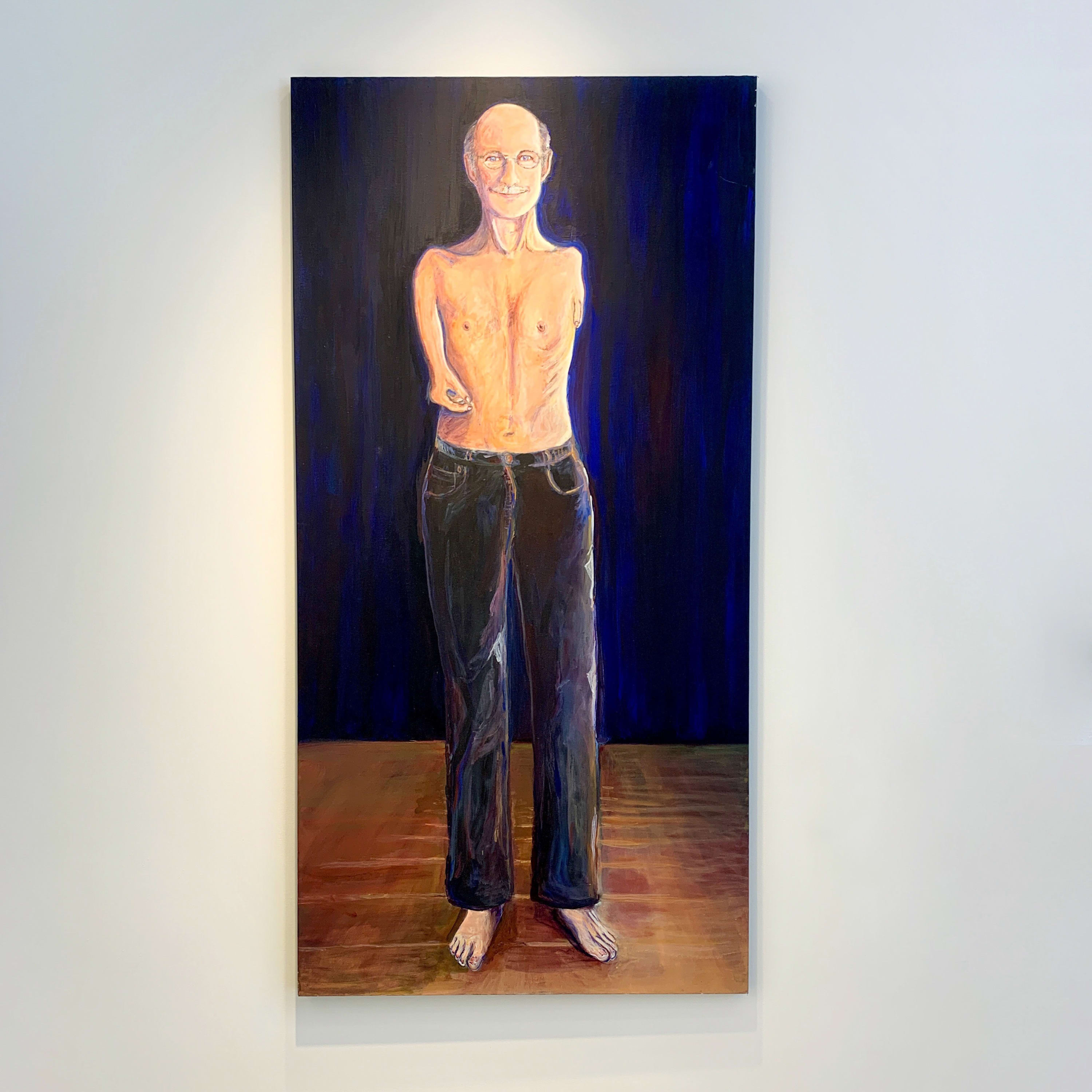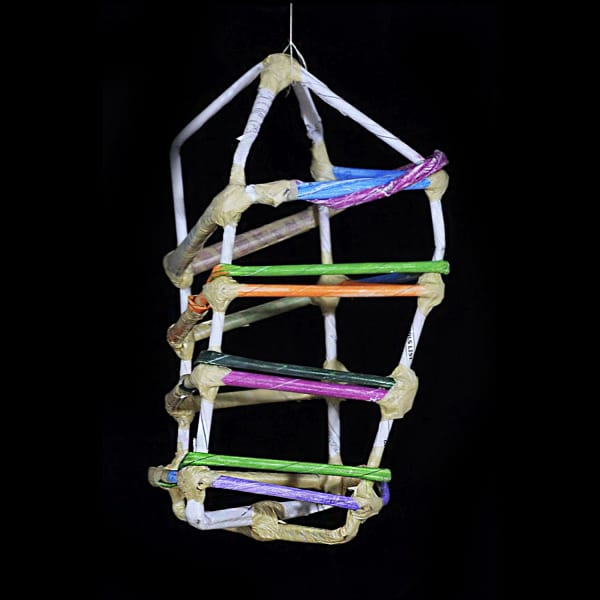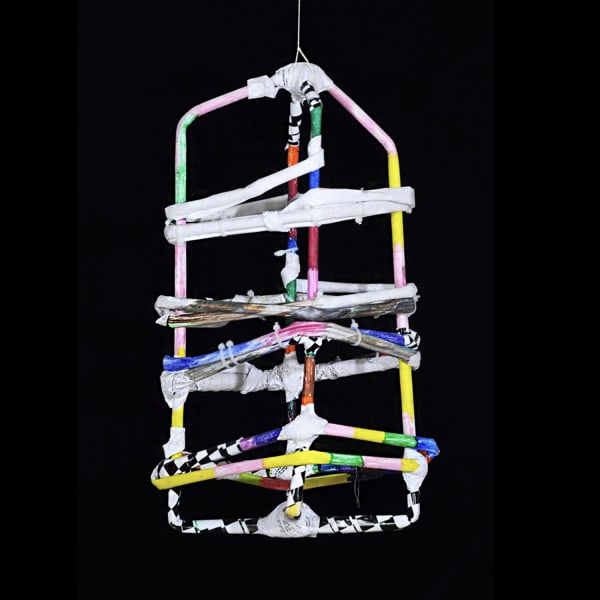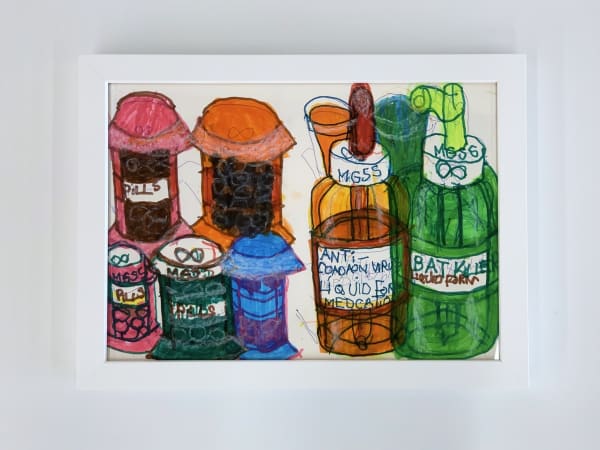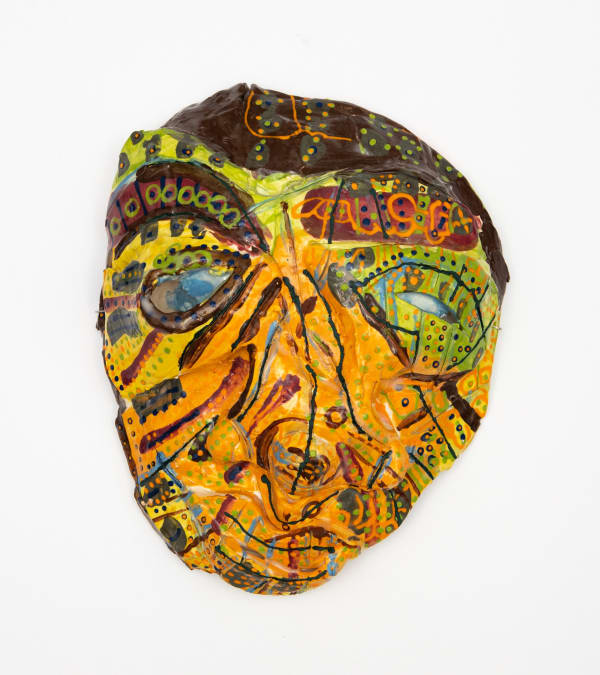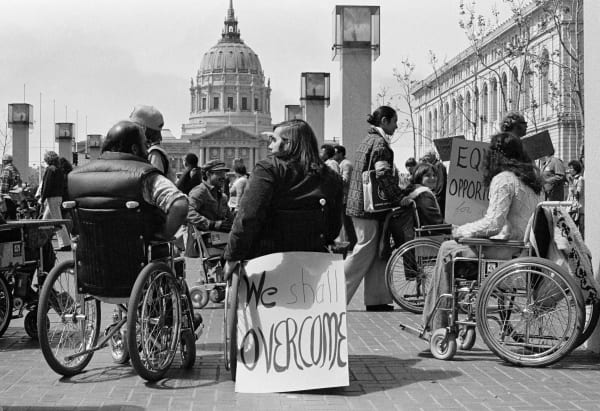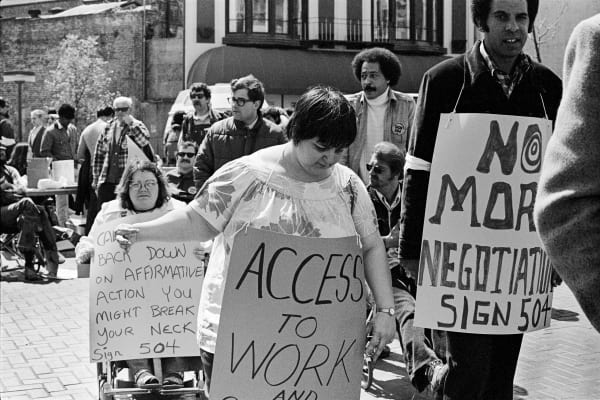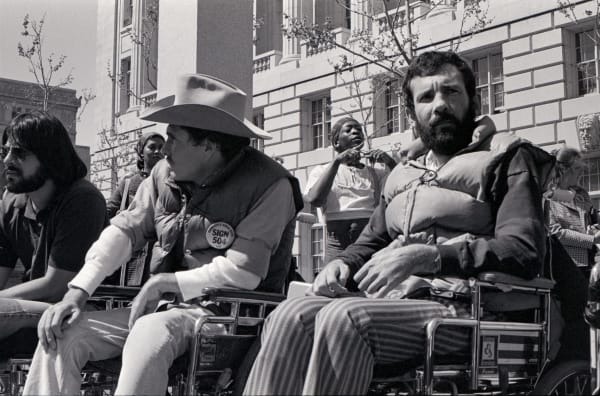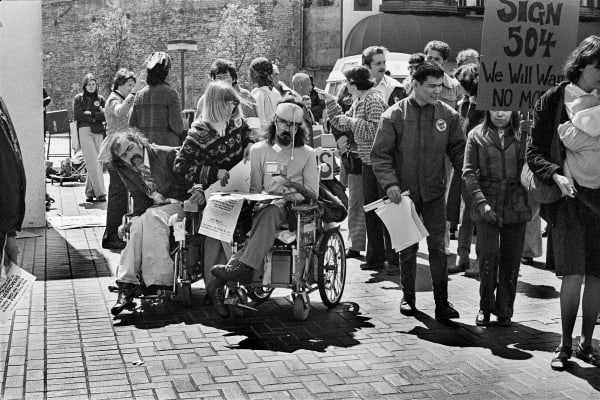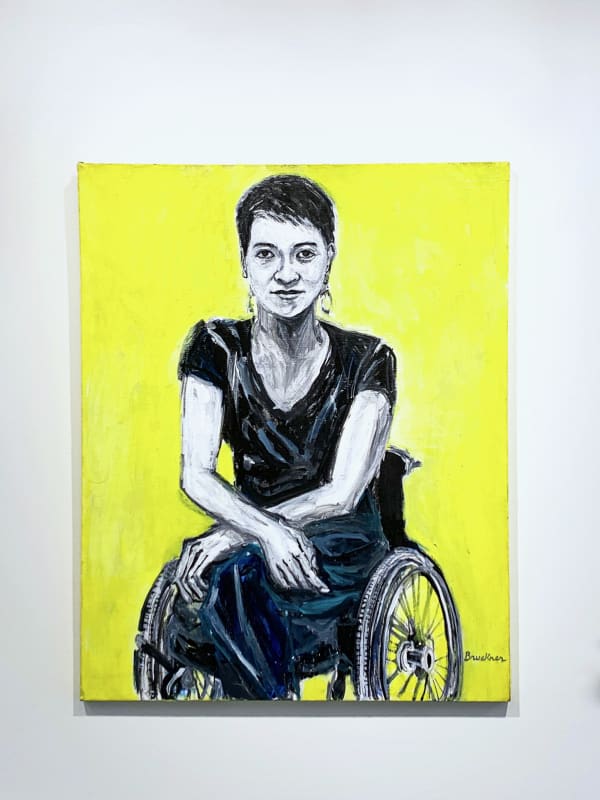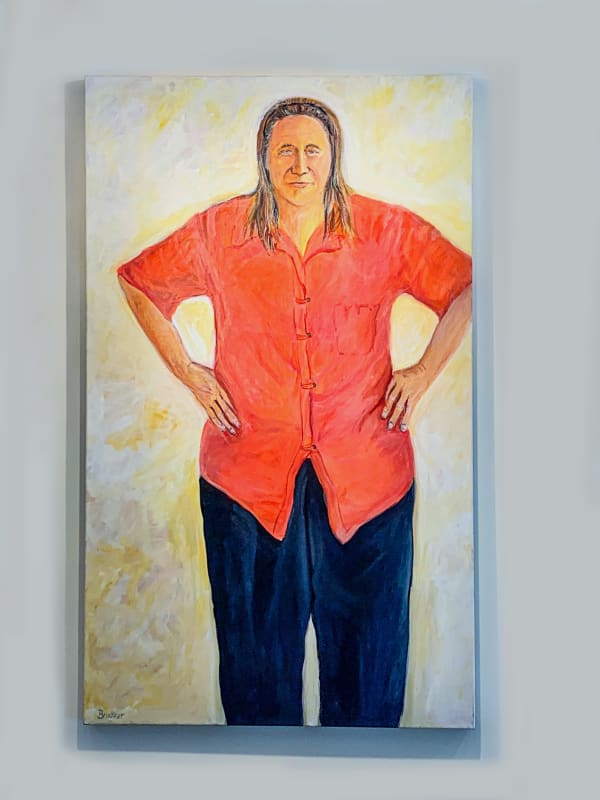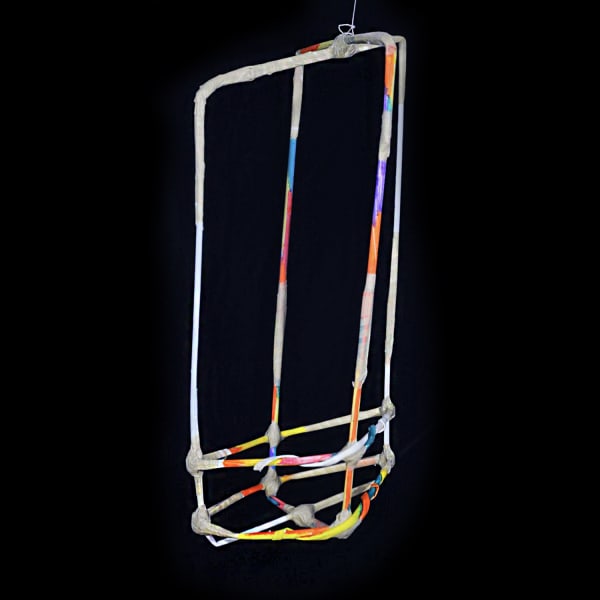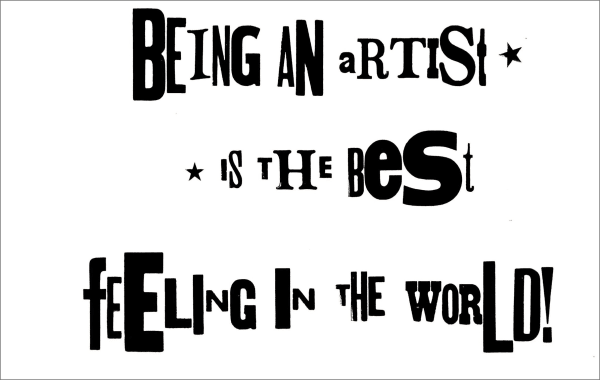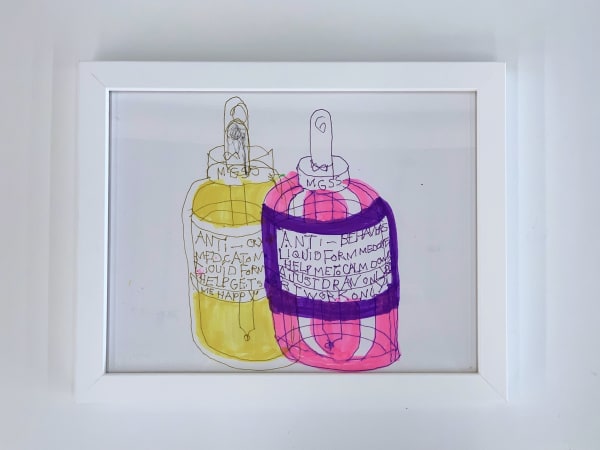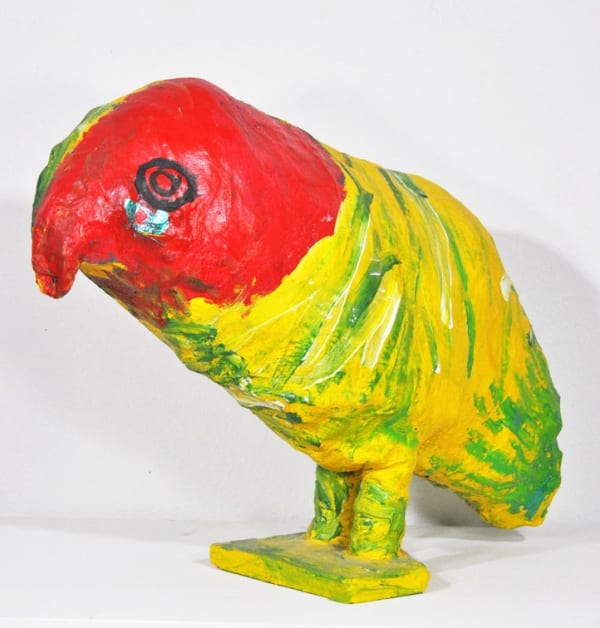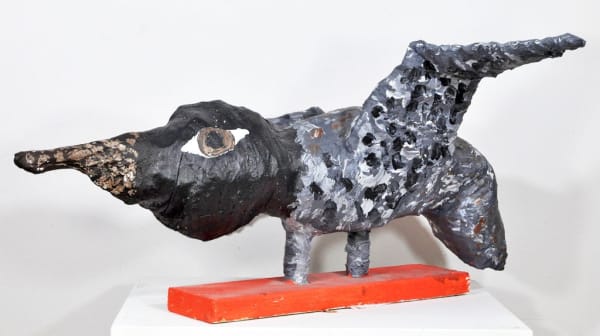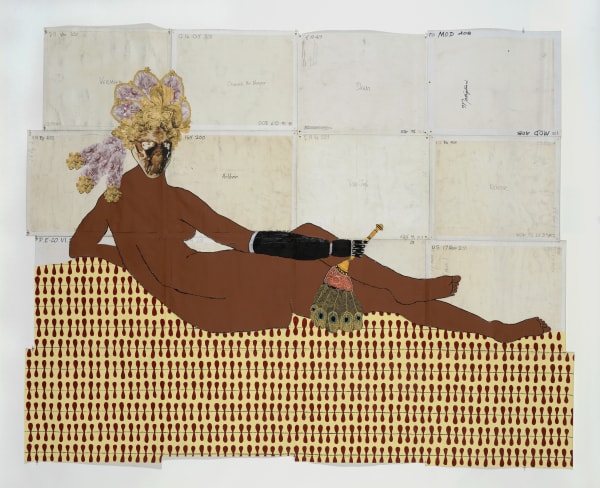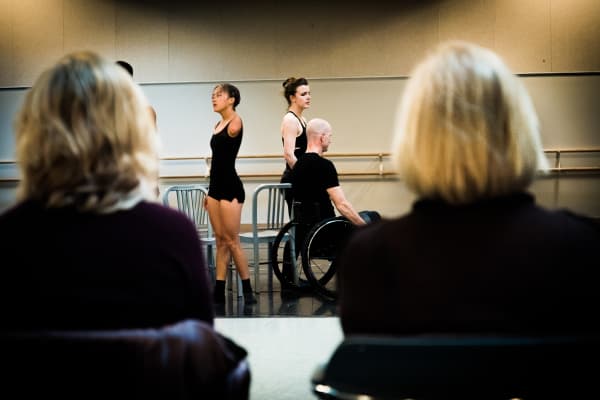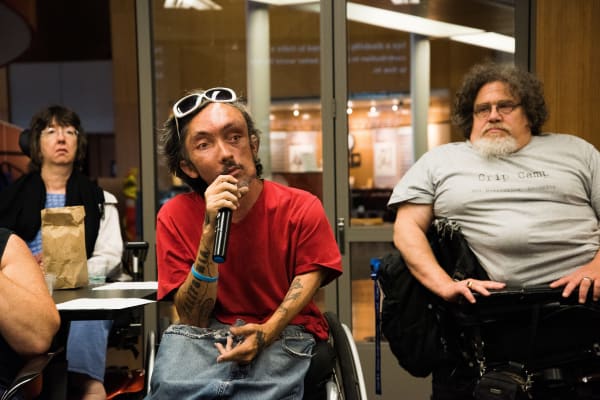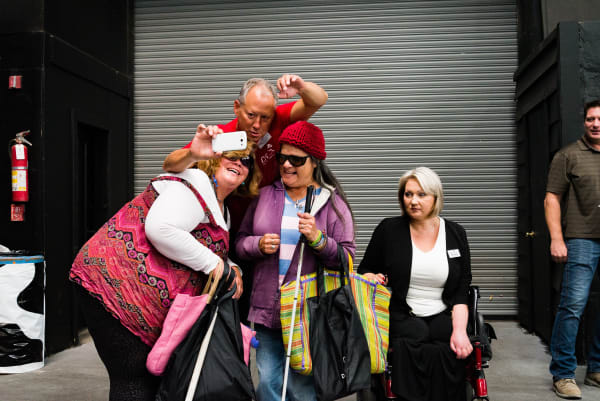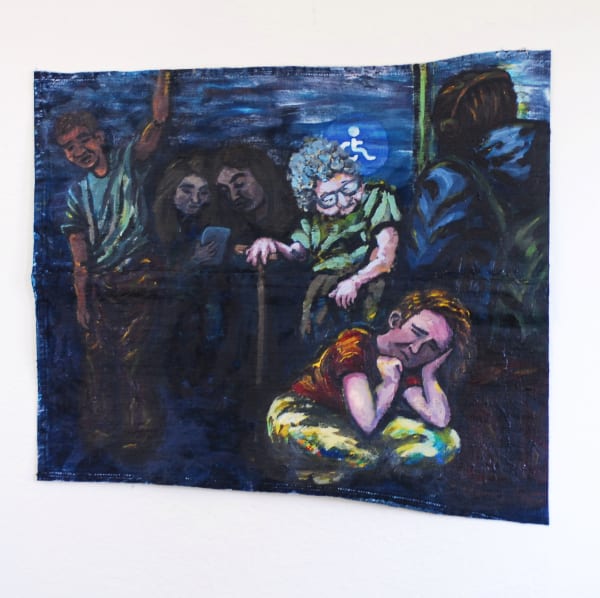-

-
The Art of Disability Culture
Artists with Disabilities Dispelling Myths, Dissolving Barriers and Disrupting PrejudiceThe Art of Disability Culture is an invitation to engage with the work of artists with disabilities and expand our understanding of the disability community. At the heart of the exhibition is a celebration of the diverse, personal, and infinitely varied "disability experience". Each of the 12 artists has one or more disabilities, whether visible or invisible, and the exhibition centers upon their creativity, vulnerability, and unique perspectives.
One in four people have a disability or will acquire one through age, and although we have the Americans with Disabilities Act (ADA) and other legal protections, discrimination, prejudice, and exclusion persist. Indeed, many disabled artists have become activists as a response to an often hostile or inaccessible world. The exhibition includes work from artists who worked to create greater access through the Americans with Disabilities Act (ADA) of 1990 as well as work by the younger generation who claim their place in the world as a civil right without apology.
The exhibition aims to create a safe space of reflection and contemplation, one in which it is fine to stare and experience the humanity of others. We hope that you spend time with the artwork here and leave with a new perspective and insight into the local disability community and the power of disability culture to make our society stronger and more resilient.
Fran Osborne
Guest CuratorLISTEN TO THE AUDIO DESCRIPTION of complete curatorial statement →
-
Future is Inclusive and Accessible
Artwork Descriptions
Each artwork in this viewing room is accompanied by a visual description. In some cases, additional detail images are included to offer a closer look at the artist's technique. Please click on individual artwork images to access this information.
Audio Descriptions
Audio artwork descriptions are available through "Audio Description" links in each artist section.
Additional Resources
Spotify Playlist
In conjunction with the exhibition, artist Anthony Tusler has compiled a playlist of tracks that feature Disability Songs, Singers, or Songwriters.
Listen to the playlist on Spotify while exploring the exhibition →
Acknowledgment
The Art of Disability Culture is a continuation of one hosted by the Palo Alto Art Center in Fall 2021 and aims to keep the conversation going. Grateful thanks to all the artists, private lenders, Walter Maciel Gallery in Los Angeles, Creative Growth, NIAD Art Center, and Creativity Explored for making this exhibition possible.

“At around 25 years of age I started realizing that making art made me exceedingly happy. That’s been the case ever since ... I was so happy to merely change hands after I had the stroke instead of giving up my avocation."
— Katherine Sherwood
After Ingres is based on the painting Grande Odalisque by Dominique Ingres dating from 1814. The original Ingres painting caused uproar in the salons of France and there were jokes about the impossible length of the subject’s back, having “two or three vertebrae too many” because of the artificial elongation of her spine. Scholars have subsequently found that Ingres deliberately distorted the model’s proportions and shortened her left arm.
Curatorial comment
Katherine Sherwood found a new way of working after a serious stroke in the Spring of 1977 at the age of 44. By switching to her left hand during her recovery, she continued to paint but now with ready-mixed pigment and using larger canvases that were easier to handle.
In her Venuses series, Sherwood playfully challenges us to consider our role and our bias by subverting many established art historical conventions, and weaves in questions of staring and looking. As we stare at, and judge the female (and the disabled) body, are we seeing through the “male gaze” or valuing difference and fragility?
Michaela Oteri’s graphic works portray the diversity and dignity of disabled people from all backgrounds. Her graceful forms and glorious use of color evoke the balance and sinewy forms of art nouveau. Oteri’s carefully composed digital designs use colors and motifs that are meaningful to the sitter. If visible, the sitter’s disabilities are neither hidden nor disguised.
Oteri’s self-portrait hints at the disability futures movement, which pushes for a new reality of improved access and inclusion. At the same time, the work reminds us that disabled people are here to stay and have much to contribute.
The memorial portrait of activist Stacey Park Milbern was created almost as soon as the sad news of her passing spread. Milbern touched many lives and founded the Disability Justice Culture Club in Oakland. She left an important legacy for young people with disabilities and Oteri’s portrait aims to honor her love of community and her joy.
Curatorial Comment
"I know for hearing people, my words remain silent, as if I come from another world. But through my dance, I think people can better understand my silent world. At the end, I want the audience to join together in signing, to signal we are all one spirit. I hope people leave feeling that we can all coexist and be part of each other’s lives in some meaningful way.” ― Antoine Hunter
Celebrated Bay Area Deaf dancer Antoine Hunter collaborated with acclaimed theater director Ellen Sebastian Chang on the creation of Silence, a dance broken into three parts.
Against an urgent and rhythmic score of cello and violin, Hunter begins with raised arms under a single spotlight, in a gesture of calling in. He takes us on a deeply personal journey into the intensity of his experience. His movements throughout invite us to consider ASL as a form of dance, and dance as a non-verbal and gestural language.


“These paintings are part of an ongoing series of portraits of friends who have disabilities that I began in the early 1990s. One of my intentions is to create images that convey disabled people’s ordinary―not heroic―dignity, humanity, and self-respect. In most of these works, I have attempted to present the persons you are viewing as looking directly back at you, as curious about you as you may be about them.”
- Bill Bruckner
Curatorial Comment
The Bay Area is a fertile home to many organizations and activists who continue to forward disability rights and disability justice and disabled artists are an integral part of this strong and expanding ecosystem. Their practice and their work provide us all with a valuable model of communication and support that relies on interdependence, patience, and ingenuity. Presented in this exhibition are the works of artists from Creativity Explored in San Francisco, Creative Growth in Oakland, and NIAD Art Center in Richmond.
Ruth's Table is a valued ally in the work of inclusion and participation for people with disabilities, and a perfect venue to showcase organizations that continue to pioneer inclusive art practices originated here in the Bay Area and are followed far and wide.

Over her career, Camille Holvoet has developed a very keen local fan base for her distinctive and highly colorful artworks. The descriptive text in many of her pieces is often confessional and complicates the apparent sweetness of her color palette and images.


"When I work in the studio, I like to stay in one spot so I can focus. I like to repeat an image; that’s why stencils and printmaking interest me ... Learning printmaking was a challenge over the last decade.
I want my art to expand into the world … I want you to know that being an artist is the best feeling in the world.”―Shana Harper

“Straight up from my imagination.” – Cedric Johnson
Cedric Johnson always knew he wanted to be an artist. He works with a wide range of media, from wood and textiles to ceramics and printmaking. He combines vibrant color palettes with intricate linear patterns and often creates ceramic masks or uses masks as a favorite symbol in his works on paper.

"This work explores how vulnerability can be an asset in relationships, rather than a weakness as society suggests. The vulnerability of disabled people and our varying levels of dependency are infantilized in our ableist society…
One of the biggest challenges of having an invisible disability is being gaslit and thus not receiving reasonable care. Regularly we will be bullied off the bus seat or denied accommodations for employment.”
– Rachel Ungerer

Curatorial Comment
Anthony Tusler’s iconic black-and-white photos from the disability rights movement are often used in disability history projects. The 1977 occupation of the federal building by more than 100 people with disabilities for 26 days helped bring in the regulations for Section 504 of the Rehabilitation Act, the first civil rights legislation for disabled people. Back then, Tusler was just beginning to discover the importance of activism and the fight for disability rights. He began documenting the daily life of friends and colleagues as the Bay Area’s Independent Living Movement was taking shape.
"I am a Disabled person. The world designates me disabled because I use a power wheelchair. Both the positive and negative aspects of that category have a powerful influence on how I see myself. My goal is to value and celebrate my membership in the disability community and my disability identity; while recognizing the prejudice I encounter and the day-to-day travails of being human and disabled.”
- Anthony Tusler
Work in the exhibition is varied and diverse, revealing a wide range of perspectives that are compelling, honest, and vulnerable. Together these works take us to a deep place of engagement, curiosity, and connection, and we hope that they will provide a satisfying, thought-provoking, and powerful experience of our collective humanity and interdependence.
This viewing room features a selection of the works featured in the exhibition hosted at Ruth’s Table gallery in San Francisco.

Exhibition Catalogue
The Art of Disability Culture
Past viewing_room



